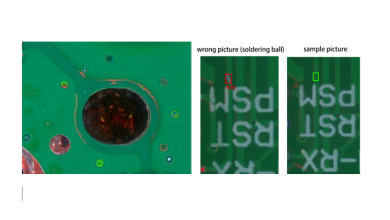Decoding Milliamps to Amps and the Solar-Powered Refrigerator Revolution
In the intricate world of electric current measurement, the conversion from milliamps to amps (mA to A) plays a pivotal role. A milliampere, a fraction of an ampere and denoted by the symbol “mA,” signifies one-thousandth of an ampere (A). This unit becomes particularly relevant when gauging the battery capacity of various devices. For instance, a mobile phone battery specified at 3000 milliamp-hours implies the capability to supply around 3000 mA of current for one hour. Ampere, or simply “amp,” serves as the standard unit for electric current in the metric system and is integral to measuring the capacity of electric batteries and common household appliances like kettles, electric fires, and refrigerators.

Exploring Amperage and Ohm’s Law
Amperage, often colloquially referred to as “amp,” quantifies the constant flow of one coulomb per second in an electric current. The relationship between voltage (V), current (I), and resistance (R) is articulated through Ohm’s Law, expressed as I = V / R. In simpler terms, the current (in amps) equals the voltage (in volts) divided by the resistance (in ohms). Understanding these fundamental principles is essential when delving into the world of electric currents and their applications.
Solar-Powered Refrigerator Vs. Solar Generator for Refrigerator
Harnessing solar energy is a commendable strategy to curtail electricity consumption, and two promising options are available for refrigeration needs: the solar powered refrigerator and the solar generator for the fridge.
Solar-Powered Refrigerator
A solar-powered refrigerator operates directly on solar energy, utilizing photovoltaic panels to convert sunlight into DC electrical power. Ideal for off-grid living, camping, or outdoor activities in sun-drenched areas, these refrigerators are energy-efficient. However, their efficacy is contingent on prolonged exposure to direct sunlight. Challenges arise as power production is non-uniform, relying on daylight hours. To counter this, a supplementary power backup solution is advisable to charge the refrigerator during nighttime hours.
Pros:
Utilizes reliable and pure solar energy, aiding in cutting electricity bills.
Energy-efficient, requiring a 250-watt panel and a few deep-cycle batteries.
No need for fuel or gas, reducing maintenance costs.
Cons:
Power production is inconsistent due to the intermittent nature of solar radiation.
Unsuitable for areas with low average solar radiation flux.
Requires a large collector for substantial solar energy production.
Solar Generator for Refrigerator
A solar generator for refrigerators offers a renewable and eco-friendly energy source, converting sunlight into electricity stored in lithium-ion batteries. Portable and versatile, these generators cater to various home and outdoor appliances. Simultaneous charging of electrical devices and the solar generator enhances their utility, making them ideal for camping, outdoor activities, and off-grid living.
Pros:
Sustainable Energy: Converts sunlight into electricity stored in lithium-ion batteries, offering a sustainable energy solution.
Nighttime Functionality: As a solar power system, it has the capability to generate power even during nighttime, ensuring continuous power supply.
Versatility: Capable of powering most appliances, making it a versatile power source for various devices.
Pass-Through Charging: Facilitates pass-through charging, allowing simultaneous powering of appliances and charging of the battery, enhancing flexibility.
Environmentally Friendly: Emits no harmful gases, ensuring indoor safety and contributing to a cleaner environment.
Low Maintenance: Requires minimal maintenance, with occasional cleaning of solar panels being the primary upkeep task.
Cons:
High Cost: Larger capacity solar generators may be comparatively expensive when compared to solar refrigerators, posing a potential drawback in terms of cost.
Conclusion
In the quest for sustainable energy solutions, understanding the nuances of milliamps to amps is foundational. Pairing this knowledge with the exploration of solar-powered refrigeration options provides individuals with informed choices for reducing electricity bills and embracing a greener lifestyle. Whether opting for a solar-powered refrigerator or a solar generator for the fridge, each avenue presents unique advantages and challenges, empowering users to make conscious decisions in their pursuit of energy efficiency and environmental stewardship.


